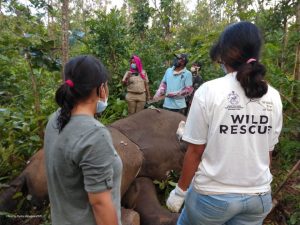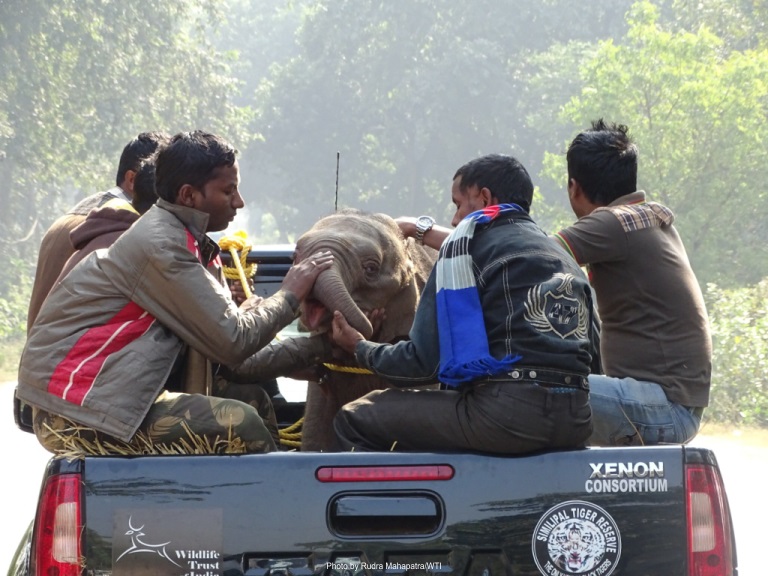Big Idea: To increase the welfare of displaced individual animals while enhancing conservation and pioneering science-based rehabilitation and wildlife health across India, and in doing so to save at least 40,000 lives in the decade.
Wildlife displacement, as defined with respect to the “Big Idea” of the Wild Rescue division, is the undesirable dislodgment of wild animals either spatially outside their natural habitat or functionally within their habitat.
Displacements are addressed through the dedicated wildlife rehabilitation facilities; Centre for Wildlife Rehabilitation and Conservation (CWRC) near Kaziranga Tiger Reserve in the state of Assam and the Centre for Bear Rehabilitation and Conservation (CBRC) near Pakke Tiger Reserve in Pakke Kesang District of Arunachal Pradesh and Mobile Veterinary Service (MVS) units stationed at Protected Areas (PAs) where such displacements are high.

CWRC, established in 2002, is a multi-species rehabilitation facility jointly managed with the Department of Environment and Forest, Government of Assam. the facility has released over 5000 displaced wildlife back to suitable habitats. CBRC is a dedicated rehabilitation facility for rescued milk-dependent Asiatic black bears jointly established and managed with the Department of Environment, Forest and Climate Change, Government of Arunachal Pradesh in 2003, have managed to release more than 60 rescued bear cubs back to the wild.
The Wild Rescue division has pioneered the rehabilitation of rescued milk-dependent Asian elephants, Asiatic black bears, greater one-horned rhinoceroses, and wild buffaloes back to the wild. Apart from the rehabilitation facilities, MVS units stationed at protected areas in the states of Assam, Arunachal Pradesh, Odisha and Uttar Pradesh; aim at facilitating the safe and prompt return of displaced wild animals to their habitat to restore natural ecosystem functions/processes and consequently reduce biodiversity loss. The MVS units also support the protected area management as the “wildlife health units” by conducting health management of captive elephant populations, disease surveillance, post-mortem investigations and support creating immune belts around the PAs through livestock vaccinations.
Additionally, WTI has pioneered a network of wildlife rehabilitators in India who assist in rehabilitating distressed wildlife through the Emergency Relief Network (ERN). At present, ERN has more than 300 individuals as well as organizational members across the country, who respond to animal emergencies during natural or man-made disasters or other eventualities. The ERN members are supported technically through workshops on enhancing capacity as well as financially to execute their work in the field. Approximately 95,000 animals have been handled through this network, including the rehabilitation of star tortoises rescued from the illegal wildlife trade, assistance to Olive Ridley hatchlings in reaching the sea, relief given to domestic animals during times of natural disasters, and treatment and rehabilitation of birds injured during the annual kite flying festival of Uttarayan in the states of Rajasthan and Gujarat.
Projects involved:









